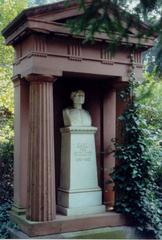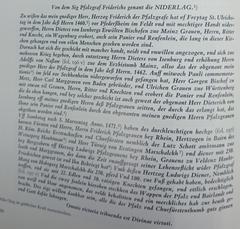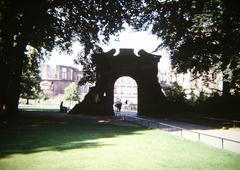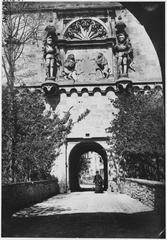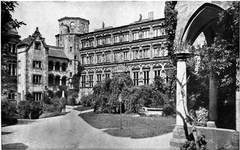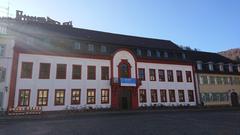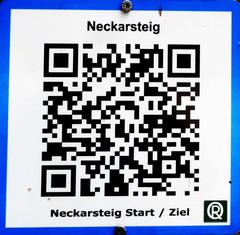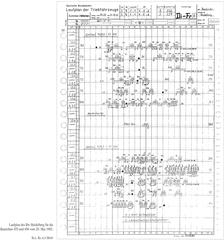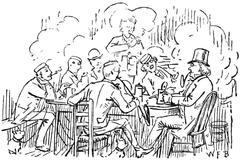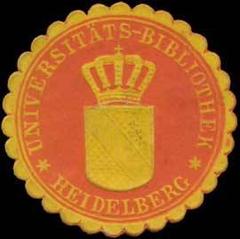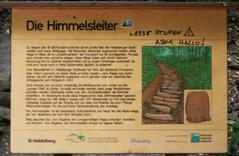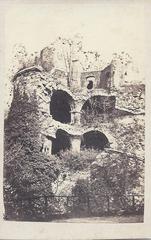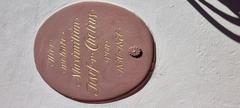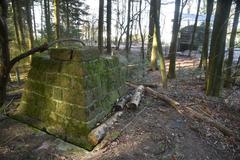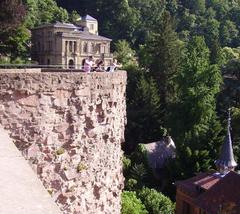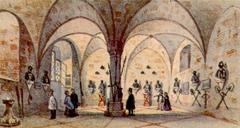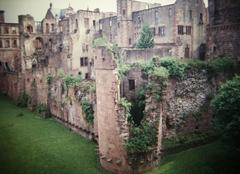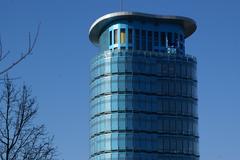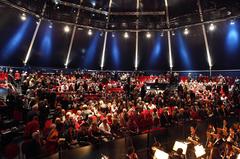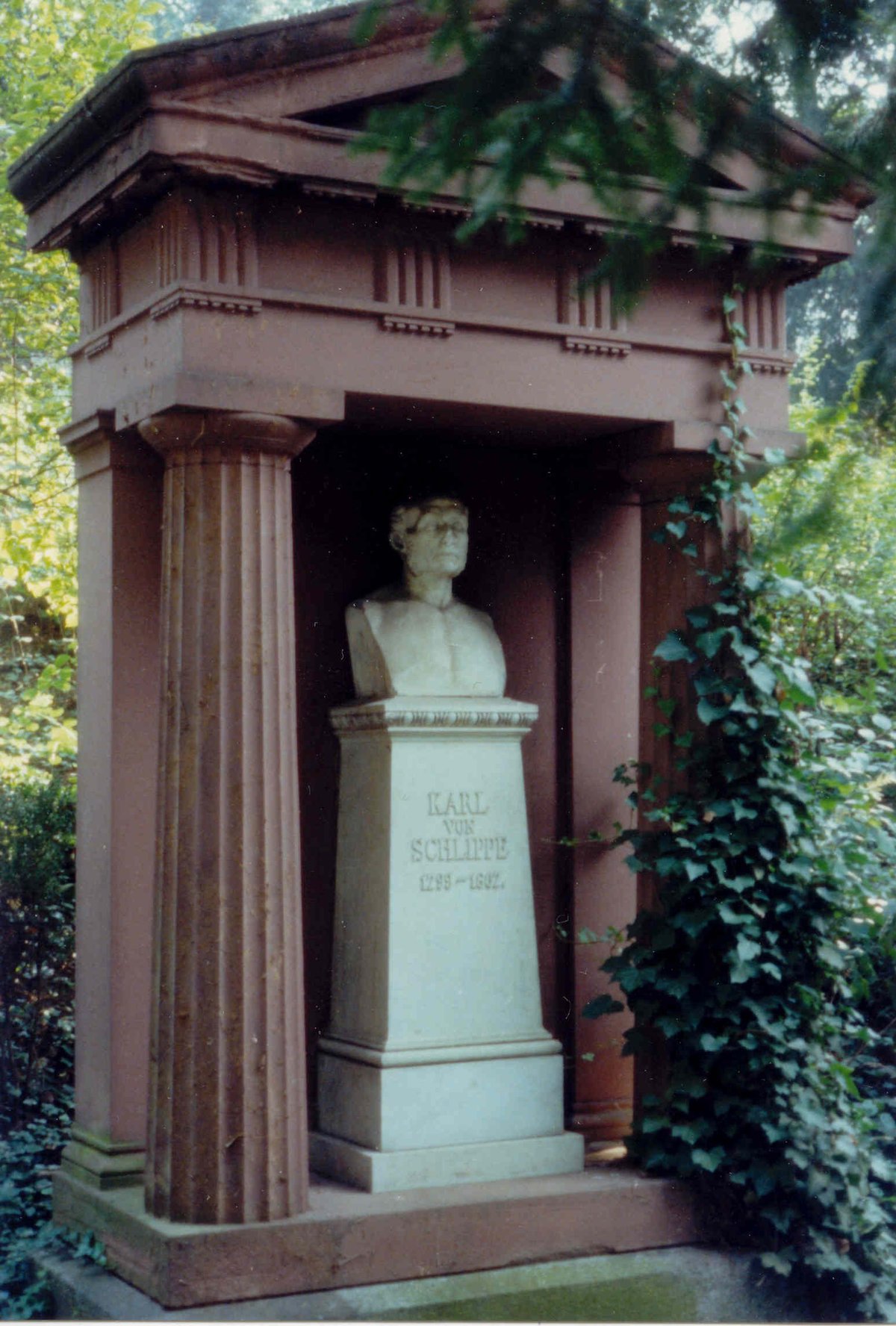
Bergfriedhof Heidelberg: Comprehensive Guide to Visiting Hours, Tickets, and Historical Highlights
Date: 14/06/2025
Introduction
Bergfriedhof Heidelberg, nestled in the Südstadt district, stands as a living monument to the city’s multifaceted history, cultural diversity, and environmental innovation. Established in the mid-19th century, it is the largest cemetery in Heidelberg and one of Germany’s pioneering sites for both cremation practices and inclusivity in burial traditions (Heidelberg.de; Wikipedia). With its terraced landscape, winding paths, and array of artistic monuments, Bergfriedhof offers visitors a tranquil yet profound experience—melding remembrance, history, and nature.
This guide delivers all the essential information for your visit, including a historical overview, practical details on access and tours, highlights of notable graves and monuments, environmental initiatives, and tips for making the most of your time at this remarkable site.
Historical and Cultural Significance
Origins and Development
Founded in response to Heidelberg’s burgeoning population and the limitations of existing churchyards, Bergfriedhof opened officially in 1844. Designed by landscape architect Johann Metzger, it followed innovative principles that integrated the site’s natural contours and diverse vegetation, creating a park-like, contemplative space (Heidelberg.de). Over the decades, the cemetery expanded up the hillside, now covering around 14.5–15 hectares—five times its original area (Wikipedia).
From its inception, Bergfriedhof was non-denominational, with dedicated sections for various faiths, including a Jewish cemetery that remains active today. The site became a model for inclusive burial practices and played a pivotal role in advancing cremation in Germany, with its historic crematorium dating back to 1891 (Rhein-Neckar-Wiki).
Interfaith and Multicultural Features
Bergfriedhof reflects Heidelberg’s diverse social fabric. Alongside Christian and Jewish sections, the cemetery features Germany’s first “Erinnerungsgarten der Kulturen” (Garden of Remembrance of Cultures), a communal burial area celebrating multicultural traditions through symbolic plantings and inclusive design (Heidelberg Official Cemetery Portal).
Layout, Landscape, and Visitor Orientation
Bergfriedhof’s unique layout comprises a series of terraces ascending a former vineyard slope, interlinked by over 20 kilometers of winding paths (wo-sie-ruhen.de; schwarzwald-tourismus.info). The main entrance is at Steigerweg 20, with an axial path leading to the historic crematorium. Terraced sections provide panoramic views of the Rhine Valley, especially from the chapel at the summit.
Navigation is facilitated by 22 large information boards and 58 smaller signs, complemented by a free printed leaflet and digital maps (Heidelberg Marketing). Environmentally friendly signage underscores the site’s commitment to sustainability.
Notable Structures, Monuments, and Artistic Styles
Key Architectural Highlights
- Cemetery Chapel: Built in 1842 by Heinrich Greif, the chapel has evolved architecturally over time.
- Mausoleum of the Bartholomae Family: An imposing, temple-inspired structure designed by Otto Hasslinger, reflecting late 19th-century historicism.
- Historic Crematorium (1891): Among Germany’s oldest, symbolizing the modernization of burial practices. Modernized in 1990/91 and again in 2000 with advanced filtration systems.
Notable Graves and Memorials
- Friedrich Ebert: First President of the Weimar Republic.
- Robert Bunsen: Renowned chemist.
- Carl Bosch: Nobel laureate in chemistry.
- Max Weber: Influential sociologist.
- Wilhelm Furtwängler: Eminent conductor.
- Albert Speer: Notorious architect and Nazi official, interred in the Weber family grave (WW2 Gravestone).
- Jewish Cemetery Section: A rare, intact survivor post-WWII, still in use today.
- Memorials: “Schmetterlingsgrab” (Butterfly Grave) for stillborn children, AIDS memorial, and numerous artistically significant stones (Veronika’s Adventure).
The cemetery is a veritable open-air museum, with grave markers reflecting Romanticism, Historicism, Art Nouveau, and more—chronicling the evolution of Heidelberg’s commemorative culture.
Environmental Stewardship and Innovation
Bergfriedhof is a leader in eco-friendly cemetery management:
- Insektenfreundlicher Friedhof (Insect-Friendly Cemetery): Lawns converted to wildflower meadows, insect hotels installed, and native species planted to promote biodiversity.
- Sustainable Practices: Use of peat-free soil, drought-resistant plants, and reduced mowing schedules.
- Garden of Remembrance of Cultures: Germany’s first, supporting inclusive, multicultural burial practices.
- Awards: Winner of the Baden-Württemberg Landscape Architecture Prize for sustainable management (Heidelberg Official Cemetery Portal).
Practical Visitor Information
Visiting Hours
- Summer: 8:00 AM – 6:00 PM (sometimes extended to 8:00 PM)
- Winter: 8:00 AM – 4:30 PM
- Admission: Free for all visitors
- Current hours: Always check the official website before your visit.
Access and Transportation
- Public Transport: Tram lines 22, 23, and 24; S-Bahn lines 1 and 2; bus lines 33 and 35; stops “Bergfriedhof” and “West-/Südstadt” are nearby.
- Parking: Limited spaces at Steigerweg and adjacent streets; cycling is encouraged.
- On Foot: Approximately 20–30 minutes from Heidelberg Old Town.
Accessibility
- Terrain: Lower sections are gently sloped and paved; upper terraces may require climbing stairs or navigating gravel paths.
- Wheelchair Access: Main paths accessible; staff can recommend routes. Electric mobility vehicles may be reserved (wo-sie-ruhen.de).
- Facilities: Restrooms and benches throughout; drinking water and waste disposal available.
Guided and Self-Guided Tours
- Guided Tours: Free monthly tours (mainly in German, English upon request) cover history, notable graves, and environmental initiatives. Check schedules online or at the administration office.
- Self-Guided Routes: Free leaflets and digital maps suggest circular trails and highlight key graves and monuments. Four main routes cater to different interests and mobility levels (Heidelberg Marketing).
Points of Interest and Nearby Attractions
Within Bergfriedhof:
- Historic chapel and crematorium
- Bartholomae Mausoleum
- Notable graves (Ebert, Bunsen, Weber, Furtwängler, etc.)
- Jewish cemetery section
- Innovative memorials and wildflower meadows
Nearby Heidelberg Attractions:
- Heidelberg Castle
- Philosopher’s Walk
- Old Bridge (Alte Brücke)
- Church of the Holy Spirit
Visitor Etiquette and Practical Tips
- Respect: Maintain quiet, avoid disturbing ceremonies, and be discreet with photography, especially near recent graves.
- Dogs: Only service animals are permitted.
- Footwear: Wear sturdy shoes suitable for uneven terrain.
- Weather: The cemetery is open-air; dress appropriately.
- Maps and Apps: Use free maps or digital resources for navigation.
- Sustainability: Use public transport or bicycles when possible; respect designated habitat areas.
Frequently Asked Questions (FAQ)
Q: What are the opening hours of Bergfriedhof Heidelberg?
A: Typically open daily from 8:00 AM to 6:00 PM (sometimes later in summer), and from 8:00 AM to 4:30 PM in winter. Confirm on the official website.
Q: Is there an entrance fee?
A: No, admission is free.
Q: Are guided tours available?
A: Yes, monthly free tours are available, with English options upon request.
Q: Is the cemetery accessible for people with disabilities?
A: Many main paths are accessible; staff can advise on the best routes.
Q: Can I take photographs?
A: Yes, for personal use and with respect for privacy.
Q: Are dogs allowed?
A: Only service animals.
Visual Highlights
Alt text: Main entrance of Bergfriedhof Heidelberg, showcasing historic stone gates surrounded by greenery.
Alt text: The Bartholomae family mausoleum, an ancient temple-style monument within Bergfriedhof.
- For a virtual tour and more images, visit Veronika’s Adventure.
Contact and Further Information
-
Landschafts- und Forstamt Heidelberg
Steigerweg 20, 69115 Heidelberg
Tel.: +49 6221 58-28090
Email: [email protected]
Official Website -
Additional information:
Schwarzwald Tourismus
wo-sie-ruhen.de
Summary
Bergfriedhof Heidelberg offers a rich tapestry of history, art, and environmental stewardship—embodying nearly two centuries of social evolution. From pioneering cremation and multicultural burial practices to championing biodiversity and sustainability, it stands out as a site of reflection, education, and natural beauty. Whether exploring independently or on a guided tour, visitors will find the cemetery both accessible and rewarding, with proximity to Heidelberg’s other famed landmarks. Check opening hours, download self-guided tours via the Audiala app, and immerse yourself in one of Germany’s most significant cemeteries (Heidelberg.de; Veronika’s Adventure).
Plan Your Visit
- Download the Audiala app for self-guided audio tours.
- Follow our social media channels for event updates and travel inspiration.
- Explore related articles on Heidelberg’s historical sites and sustainable travel.
Sources
- Heidelberg.de
- Rhein-Neckar-Wiki
- Heidelberg Marketing
- Heidelberg Official Cemetery Portal
- Wikipedia
- Veronika’s Adventure
- Wo-Sie-Ruhen.de
- Schwarzwald Tourismus
- WW2 Gravestone
- Trip.com
